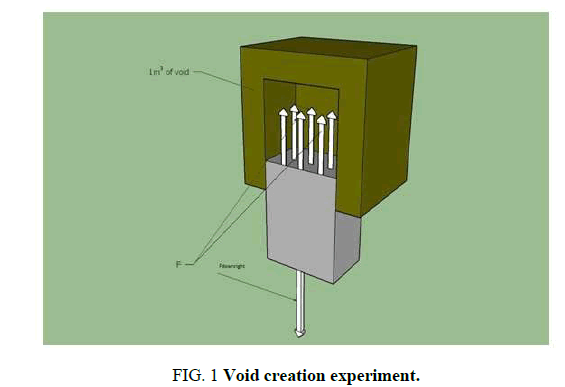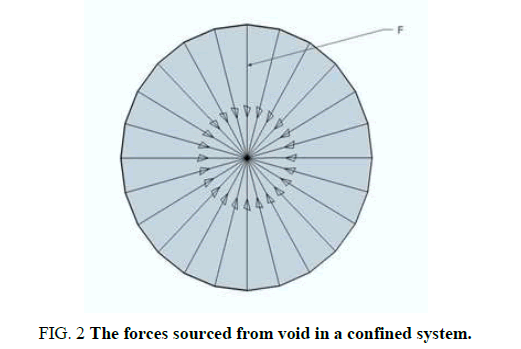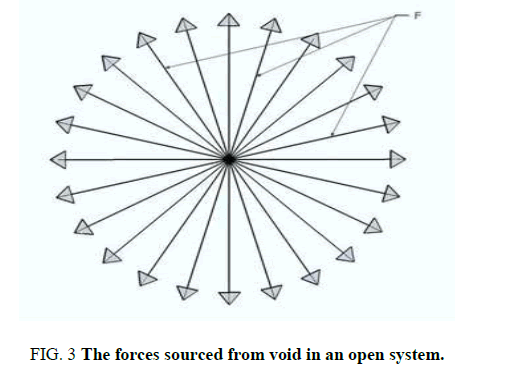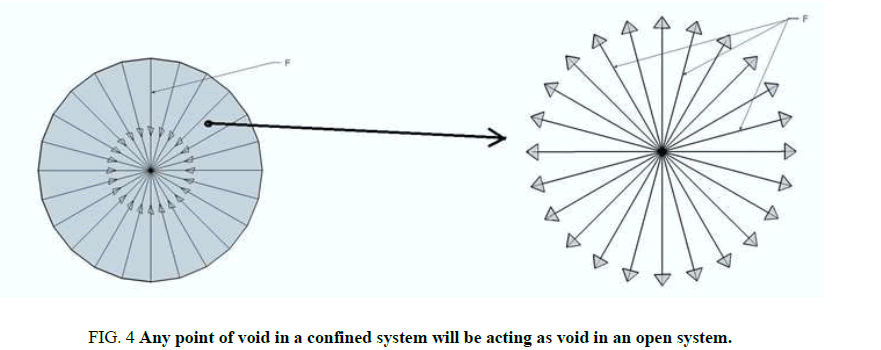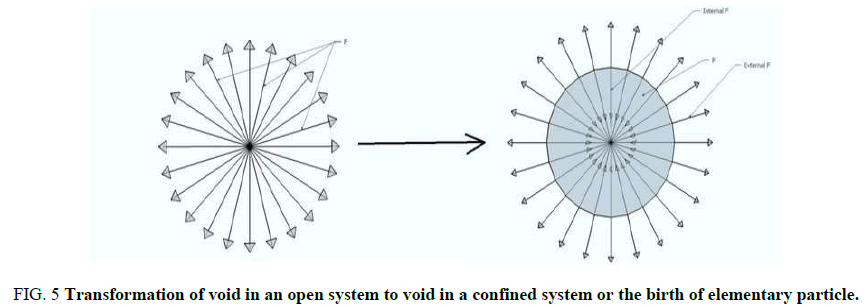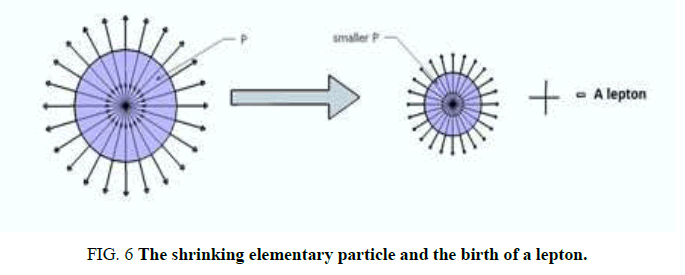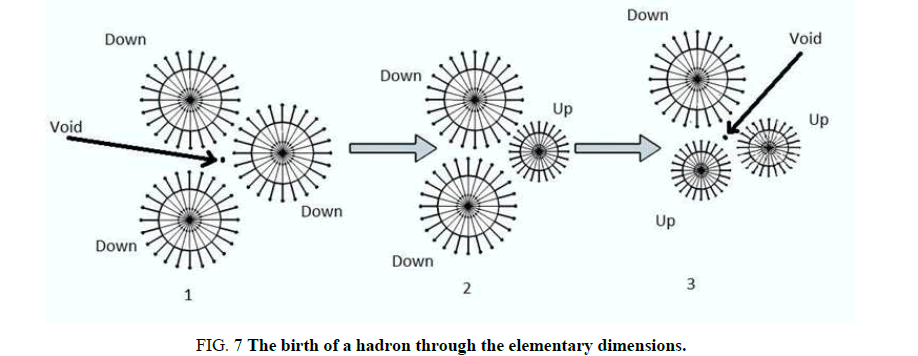Mini Review
, Volume: 11( 7) DOI: 10.37532/2320-6756.2023.11(7).360The Analysis of Creation of Elementary Particles through the Elementary Entity and Dimensions
- *Correspondence:
- Shivan Jumaah Sirdy
Department of Physical Science,
Kirkuk University,
Kirkuk,
Iraq,
E-mail: sheevan91@gmail.com
Received date: 03-April-2020, Manuscript No. tspa-23-8901; Editor assigned: 08-April-2020, Pre-QC No. tspa-23-8901 (PQ); Reviewed: 22- Apri-2020, QC No. tspa-23-8901 (Q); Revised: 03-July-2023, Manuscript No. tspa-23-8901 (R); Published: 31-August-2023, DOI. 10.37532/2320-6756.2023.11(7).360
Citation: Sirdy SJ. The Analysis of Creation of Elementary Particles through the Elementary Entity and Dimensions. J. Phys. Astron. 2023;11(7):360.
Abstract
Void is an elementary entity. It has four dimensions (XYZ and the force). The fourth dimension (the force) is the factor of change among the four. Those four are elementary dimensions. When the XYZ increases the force increases as well. Till here, the void is in an open system and the direction of its force is outward. There is a limit where the force reaches its maximum. From the limit, the force changes its direction to inward and the void inside will act as void in a confined system. Meaning now, the void in a confined system is acting as an elementary particle. Now the created elementary particle is being managed by internal void force and external void force.
Keywords
Elementary dimensions; Internal void force; External void force; Elementary particle
Introduction
When the internal force is bigger than the external, the elementary particle decays to smaller elementary particle through the internal force and lepton through the external force effect, the process will go on till equilibrium is reached between the internal forces and the external forces. As before the creation of particles, they were infinity space of XYZ. Therefore, unlimited numbers of quarks were created. Now the void among the quarks acts as in a confined system, meaning it will pull a number of quarks together necessary to achieve equilibrium among the internal and external forces of the hadron. During the process, unlimited number of hadrons and leptons were created. Randomly, different numbers of hadrons and leptons will be in groups together [1]. That will lead to the creation of the atoms of different types of elements in the nature. Obviously the most common atom will be the hydrogen atom, as it only consists of a single proton and an electron. However, as the atoms were created a fifth dimension has surfaced. The fifth dimension is the electromagnetism due to the interaction between the hadrons and the leptons.
Together with the elementary four dimensions, they will play a major role in the stability of the existence. As there will be unlimited interactions between the atoms created in the universe [2].
Literature Review
Void is a space devoid of particles or matter. For starter we can say that void has three dimensions (X, Y and Z). If void only has those three dimensions, it means that change will not occur and the void will stay in the existence as the only entity. However, we must have a fourth dimension that will make the engine of existence start running. So the question is what is the fourth dimension? Is time the fourth dimension? To answer the above question, we will need to know what time actually is. Analysing time thoroughly we will see that the concept of time is something hypothetical, expresses changes that occurs in a certain event compared to number of changes in a constant change rate event. Meaning the concept of time has been made by human being to organize their lives and their histories [3]. The time doesn’t exist, however, as living beings we can sense the effects of time. Therefore, the answer is no. Time is not the fourth dimension. Time represents a factor of change and the factor of change is the fourth dimension. So what is the factor of change? To answer this question, we will need to study the properties of void from experiment. Through the experiment, we will create void (FIG. 1).
Through classic physics, summation of forces on the vertical axes equal zero.
ΣFy=0, F+Fdownright=0
Fdownright is the force needed to pull the matter downward to create 1 m3 of void and F is the force sourced from the void to return the matter to remove the void’s creation.
F-Fdownright=0→F=Fdownright
Therefore as shown in the experiment, that void has a property which is the force F. Therefore, the force F is the factor of change.
Meaning F is the fourth dimension.
Elementary entity
Void is an elementary entity in the existence and it is the source of everything else. Void has four dimensions X, Y, Z and the force. The void can exists as an absolute void, where the absolute zero temperature is reached naturally [4]. Void here is empty of any sort of electromagnetic radiations, including heat radiations. The absolute void may exists as free entities (the spaces that particles have not been created yet) and void exists in the existence as a part of the particles. Taking any simple atom as an example, where around more than 96% of the volume of any atom is occupied by void [5].
Discussion
Void in a confined system
As mentioned, the attached figure shows the forces sourced from void in a confined system. The force tries to eliminate the void’s creation through trying to crush the parameter of the surroundings toward the center of void [6]. Meaning the directions of F will be toward the center of void (FIG. 2).
Void in an open system
Obviously, void in an open system, mean the void’s existence in a free form. Where the void is not surrounded by particles [7]. Taking any point of void, we will see that void’s force is outward (FIG. 3).
As well taking any point of void in a confined system will be acting as void in an open system, meaning the directions of forces are outwards (FIG. 4).
The birth of an elementary particle (quarks and leptons) through the elementary dimensions
As mentioned above that we have four elementary dimensions and its fourth dimension is the force the factor of change. XYZ represents the volume of void and when the volume of void increases the force subsequently increases as well [8]. When the force exceeds a limit, the system will no longer be able to keep its stability. At that limit the XYZ still jumps beyond, however the force now is at its maximum allowed limit and the force instead of increasing with the XYZ, it changes its direction from outward to inward (FIG. 5).
FIG 5: Transformation of void in an open system to void in a confined system or the birth of elementary particle.
Now from the force (the factor of change) elementary particle was created to absorb the surplus force and to decrease the level of instability in the system [9]. Meaning now, the void in a confined system is acting as a particle. At this stage, we have an elementary particle. The particles now is being managed by two forces:
Internal force Fi: This force is sourced from the void inside the particle, just like void in a confined system.
External force Fe: This force is sourced from the void outside the born particle.
The Fi makes the particle shrinks, while the Fe is the resisting force that does the opposite. If Fi is bigger that Fe, the particle shrinks till the Fi becomes equal with Fe. The elementary particle (a quark) gets smaller till the effect of Fe gets noticeable, from there the Fe extract a negative charged entity from the particle that is called a lepton (FIG. 6).
FIG 6: The shrinking elementary particle and the birth of a lepton.
The birth of a hadron and an atom through the elementary dimensions
Obviously, before the creation, we have enough void space to create unlimited number of quarks and leptons. Randomly, the quarks will be next to each other [10]. The void among every three quarks will act as a void in a confined system (FIG. 7).
FIG 7: The birth of a hadron through the elementary dimensions.
Now as the void act as in a confined system, the three quarks will be hold together through the void’s force working toward the center of the three quarks.
• The void’s force is strong enough to pull the three quarks together, but the force is not enough to prevent one of the down quarks to decay to up quark and a lepton. Since, the hadron is not in equilibrium between the internal and externals forces of the three quarks.
• Now we have what is known as a neutron. The void’s force is still strong enough to pull the three quarks together, but the force is not enough to prevent a second down quarks to decay to up quark and a lepton, meaning the hadron is still not stable. Since, the hadron is still not in equilibrium between the internal and externals forces of the three quarks.
• Now we have what is known as a proton. Here, void’s force is strong enough to pull the three quarks together and to prevent the third down quark from decaying to another up quark, meaning the hadron is now stable and in equilibrium between the internal and externals forces of the three quarks.
Now during the above process unlimited number of hadrons and leptons were created. Randomly, different numbers of hadrons and leptons will be in groups together. That will lead to the creation of the atoms of different types of elements in the nature. Obviously the most common atom will be the hydrogen atom, as it only consists of a single proton and an electron.
However, as the atoms were created a fifth dimension has surfaced. The fifth dimension is the electromagnetism due to the interaction between the hadrons and the leptons. Together with the elementary four dimensions, they will play a major role in the stability of the existence. As there will be unlimited interactions between the atoms created in the universe.
Conclusion
Void is an elementary entity. It has four dimensions (XYZ and the force). The fourth dimension (the force) is the factor of change among the four. Those four are elementary dimensions. When the XYZ increases the force increases as well. Till here, the void is in an open system and the direction of its force is outward. There is a limit where the force reaches its maximum. From the limit, the force changes its direction to inward and the void inside will act as void in a confined system. Meaning now, the void in a confined system is acting as an elementary particle. Now the created elementary particle is being managed by internal void force and external void force. When the internal force is bigger than the external, the elementary particle decays to smaller elementary particle through the internal force and lepton through the external force effect, the process will go on till equilibrium is reached between the internal forces and the external forces.
As before the creation of particles, they were infinity space of XYZ. Therefore, unlimited numbers of quarks were created. Now the void among the quarks acts as in a confined system, meaning it will pull a number of quarks together necessary to achieve equilibrium among the internal and external forces of the hadron. During the process, unlimited number of hadrons and leptons were created. Randomly, different numbers of hadrons and leptons will be in groups together. That will lead to the creation of the atoms of different types of elements in the nature. Obviously the most common atom will be the hydrogen atom, as it only consists of a single proton and an electron.
However, as the atoms were created a fifth dimension has surfaced. The fifth dimension is the electromagnetism due to the interaction between the hadrons and the leptons. Together with the elementary four dimensions, they will play a major role in the stability of the existence. As there will be unlimited interactions between the atoms created in the universe.
• The force mentioned in the above illustration could be the same gravitational force that the other scientists used to talk about.
• The process of black holes creation process sounds similar to the process where the particles were created, maybe this means that a black hole is a single elementary particle.
References
- Plotnitsky A. Nature has no elementary particles and makes no measurements or predictions: Quantum measurement and quantum theory, from Bohr to Bell and from Bell to Bohr. Entropy. 2021;23(9):1197.
[Crossref] [Google Scholar] [PubMed]
- Patten BC. Environs: Relativistic elementary particles for ecology. Am Nat. 1982;119(2):179-219.
- Fernandez-Moran H, Oda T, Blair PV, et al. A macromolecular repeating unit of mitochondrial structure and function: Correlated electron microscopic and biochemical studies of isolated mitochondria and submitochondrial particles of beef heart muscle. J Cell Biol. 1964;22(1):63-100.
[Crossref] [Google Scholar] [PubMed]
- Nambu Y, Jona-Lasinio G. Dynamical model of elementary particles based on an analogy with superconductivity. Phys Rev. 1961;122(1):345.
- Wheeler JA. Problems and prospects in elementary particle research. Proceed Am Philos Soc. 1946;90(1):36-47.
[Google Scholar] [PubMed]
- Schlappa J, Wohlfeld K, Zhou KJ, et al. Spin-orbital separation in the quasi-one-dimensional Mott insulator Sr2CuO3. Nature. 2012;485(7396):82-5.
[Crossref] [Google Scholar] [PubMed]
- Reynaud E, Jouen T, Gauthier C, et al. Nanofillers in polymeric matrix: A study on silica reinforced PA6. Polymer. 2001;42(21):8759-68.
- Turney J. Accounting for explanation in popular science texts-an analysis of popularized accounts of superstring theory. Public Understand Sci. 2004;13(4):331-46.
- Skyrme TH. A non-linear field theory. Proc Royal Soc London. 1961;260(1300):127-38.
- Kajita T. Nobel lecture: Discovery of atmospheric neutrino oscillations. Rev Modern Phys. 2016;88(3):030501.
